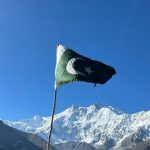Despite siding with Fascist forces in WW2, after a Soviet-backed coup in the 1940s Bulgaria operated as a communist state under the reign of the Bulgarian Communist Party (BCP) for 44 years between 1946 and 1990. Whilst not part of the Soviet Union, the country was a solid ally of the USSR, a member of the Warsaw Pact and a member of COMECON.
Much like the Soviet Union, Bulgaria transformed itself from an agricultural country into a heavily-industrialized socialist country with a strong manufacturing sector. The country initially exported household goods, and later expanded into computer technologies to such an extent that Bulgaria was nicknamed the “Silicon Valley of the Eastern Bloc”. In the late 1980s Todor Zhivkov, the leader of the Bulgarian Communist Party since 1954, began to implement liberal political reforms. The first multi-party election since the early 1930s saw the fall of Communism in Bulgaria and the People’s Republic of Bulgaria peacefully became the Republic of Bulgaria. Since then its once-mighty Communist monuments seemingly designed to stand for eternity, have mostly been forgotten to time, being sought out by only the hardiest and adventurous of travelers.
Home of YPT’s regional European office, Bulgaria is a country we have a soft spot for. Home to warm, Balkan hospitality, excellent food and a whole host of Communist-era treasures, it is a country often overlooked on the trail of those who hunt for the red relics of its Communist past.
On our Communist Bulgaria tour, we travel the length of the country, from its mighty mountains to the shores of the Black Sea. Taking in 6 cities, we’ll see a whole host of unbelievable sights from the world-famous UFO monument at Buzludzha to the heaviest Communist monument on earth whilst indulging in 1970s nostalgia by staying in classic hotels from the Communist era. To give you an insight into some of the sights included on our tour, we decided to give a rundown of the 10 best Communist monuments in Bulgaria:
10. The Alley of the Cosmonauts, Varna

Located in the stunning sea garden of Varna is the Alley of cosmonauts. This is the legacy of the unique tradition of Russian cosmonauts planting coniferous trees when they came to Varna, which was a popular holiday resort for the Soviet elite back in the day. The tradition was started by Yuri Gagarin himself when he planted the first tree on 26 May 1961. Along the alley you will see the names and trees planted by other cosmonauts such as G.S. Titov, Valentina Tereshkova, Aleksey Leonov, and many more.
9. Defenders of Stara Zagora monument, Stara Zagora

In the city of Stara Zagora in 1877, as the Russian-Turkish Liberation War erupted, Bulgarian volunteers and Imperial Russian forces joined together to fight a Turkish force that vastly outnumbered them. After a gruelling 6 hour battle, the Russian and Bulgarian forces surrendered to the Turkish soldiers, who were in no mood to dish out mercy. In the days that followed, the city of Stara Zagora was burned and over 14,500 local Bulgarians slaughtered.
Miraculously, Stara Zagora survived and 100 years later in the 1970s, the Communist government unveiled the 50-feet tall ‘Defenders of Stara Zagora’ memorial complex.
8. The Pantheon of Perished in the Fight against Fascism, Varna

The Pantheon of the Fallen of the Wars in the Maritime Gardens was built in the late 1950s. Containing the bodies of Bulgarian partisans, it truly is an impressive work of art. On top of the impressive doors of wrought iron is a factory worker holding a lowered banner and a kneeling girl, a bunch of flowers in hand – the only scene hinting the mournful rather than the heroic idea of the whole structure. The two statues on top represent two heavily armed soldiers in the thick of a fight, one clutching a handgun and the other with a grenade.
7. Central City Square Project, Shumen

In the centre of Shumen lies the failed communist project known as the ‘Central City Square’, a huge project of revolutionary urban design destined to incorporate shops, a hotel, a post office, cafes and restaurants, and wedding halls. However, after the collapse of the Communist government the project became an orphan of an ideology. Today it stands as an enormous concrete beast – too vast to complete and too sturdy to destroy.
6. Monument to Bulgarian-Soviet Friendship, Varna

Located in the home city of YPT’s regional European office is this mighty monument to Bulgarian-Soviet friendship. Constructed in honor of the Soviet Army, the monument represented friendship between the two peoples. The monument was built on Turna Hill, a former battlefield that had seen much bloodshed. To reach this epic monument requires climbing the Staircase of Victors, comprised of 305 50-feet-wide stairs. At the top is a platform where four 36-feet tall concrete Soviet soldiers can be seen. Underneath is a subterranean bomb shelter that can sometimes be accessed through holes in the doors around the base.
Built over 7 months by 27,000 ‘voluntary’ workers, over 10,000 tonnes of concrete were dragged up the hillside to create this monument. Upon completion, 20,000 trees were planted to complement the achievement. After the collapse of Communism in 1989, the monument fell into disrepair.
5. The Abandoned MiG Park, Omurtag

Few people stop at the town of Omurtag, but when the YPT team passed the outskirts of it whilst carrying out a research trip through Bulgaria, we stumbled across one of its greatest treasures – an abandoned Communist-era park of Soviet fighter jets and other military equipment.
This open-air park was once dedicated to aviation and aeronautics in Bulgaria. Omurtag is a fitting place for this, being the birthplace of the Bulgarian cosmonaut Alexander Alexandrov. Alexandrow flew to space onboard the space-ship Soyuz TM-5 together, with two astronauts from the former USSR, Anatoly Solovyov and Victor Savinih, back in 1988.
Today, like most communist relics in Bulgaria, the park is not well maintained and several MiG fighter jets, zenith rocket launchers, the radar station “Zvezda” (“Star”) and other relics are left to rot away.
4. Red Army Monument, Sofia

On the outer ring of downtown Sofia – the thriving capital of Bulgaria – sits the North-Korean-style monument to the Red Army liberators. Built in the 1950s under Stalin, it portrays a soldier from the Soviet Army as a freedom fighter, surrounded by a Bulgarian woman holding her baby and a Bulgarian man. Naturally, they’re significantly smaller than the Soviet soldier, as was common practice for such monuments in Soviet satellite states.
Today, the monument is not well maintained and it is a popular place for many young people and students to gather in the evenings, hang out and have a few beers. It is also a meeting spot for skaters, ravers, Rasta and other subcultures, who see the monument and its atmosphere as surrealistic.
The monument caused controversy and tensions between Bulgaria and Russia when it was vandalised to the theme of a political message. First the reliefs of charging Red Army troops on the base were painted as Marvel characters. On another occasion it was painted in the colours of the Polish and Ukrainian flag in response to the Crimean crisis of 2014. The monument was also used as a base to protest the arrests of the Russian protest group ‘Pussy Riot’, when it was photographed with Pussy Riot masks.
3. Bulgarian State Monument, Shumen

Shumen, located around an hour from the Black Sea port city of Varna, is home to the heaviest Communist monument on earth. Visible from over 18 miles away, you see this monument before you see the city. Since 1981, this concrete overlord, known as the Bulgarian State Monument, looms over Shumen and is dedicated to the 1300-year anniversary of the Bulgarian Empire.
In contrast to the Soviets, the Communist regime in Bulgaria would often dedicate their brutalist monuments to former kings and heroes in Bulgarian history. The sculptors of the monument, Krum Damyanov and Ivan Slavov, gave kings and heroes the appearance of stone giants frozen in concrete. Unlike many other Bulgarian monuments from the communist era, the Shumen memorial has thankfully been well maintained and is a popular spot for weddings and photo shoots.
2. Alyosha, Plovdiv

Dominating the skyline of the city of Plovdiv is the machine-gun-clutching Red Army soldier, Alyosha. An affectionate form of the name Aleksey, Alyosha was based on Alyosha Skurlatov, a soldier of the 3rd Ukrainian Front who served as the model for the monument. Standing at 17 metres (56 feet), this 1950s-era reinforced concrete and granite work of art is dedicated to the Soviets killed during the campaign to retake Bulgaria from fascist forces.
Local authorities in the city have fought to destroy the statue twice, in 1989 and 1996. These attempts led to a campaign dedicated to preserving the monument and it now has a 24-hour security guard to stop its destruction.
1. Budluzdah

Of course, of all the Communist relics in Bulgaria, the mighty Budluzdah takes the top spot! Also known as the Communist UFO monument, the Monument House of the Bulgarian Communist Party was built on Buzludzha Peak in central Bulgaria by the Bulgarian Communist regime. Whilst the mountain itself was a former battlefield in Bulgarian history, the regime chose the spot in commemoration of events in 1891, when Bulgarian socialists assembled secretly in the area to form an organised movement that led to the founding of the Bulgarian Social Democratic Party, a forerunner of the Bulgarian Communist Party.
The monument was abandoned after the fall of the Soviet Union in 1989 and now lies derelict. It remains an awe-inspiring sight, resembling a UFO that has just landed on a mountain peak. Today it is visited only by the most hardcore Communist relic hunters who will brave a mountain hike to reach it. On our YPT tours to the area, we buy some village wine and toast our ascent when we reach the top!
See Bulgaria’s impressive Communist monuments for yourself on one of our tours there!






